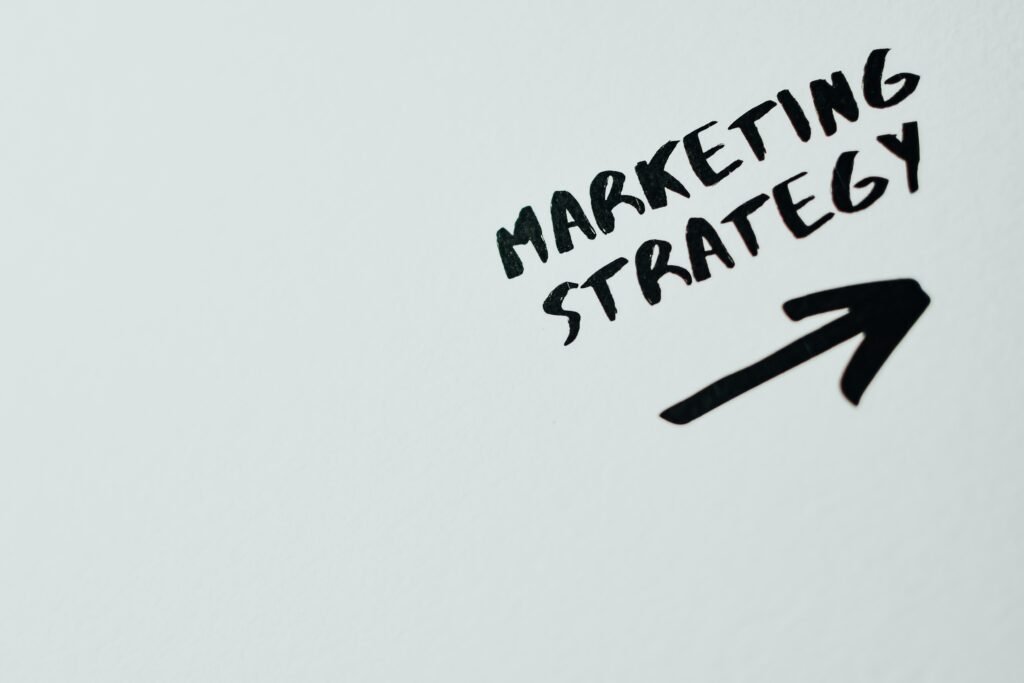Are you tired of developing products that don’t meet your customers’ needs or marketing campaigns that fall flat? It’s time to shift your focus to customer-centricity. By putting the customer at the center of product development and marketing, you can create solutions that truly resonate with them and drive business success. In this blog post, we will explore what it means to be customer-centric, how it applies to both product development and marketing, and provide examples of companies who have mastered this approach. Get ready to learn how creating a customer-centric approach can take your business to new heights!
Creating a Customer-Centric approach to Product Development and Marketing
What is Customer Centricity?
Customer centricity is a business approach that places the customer at the center of all decisions. It involves understanding their needs, preferences and pain points, then using this information to create products and services that better suit them.
At its core, customer centricity is about creating an exceptional experience for customers – one that goes beyond just meeting their expectations. This requires businesses to listen closely to what customers are saying and adapt quickly based on feedback.
In order to become truly customer-centric, organizations must be willing to shift their focus from short-term gains towards building long-lasting relationships with customers. This means investing in technology and processes that make it easy for customers to engage with you across multiple channels.
Ultimately, being customer-centric isn’t just good for your bottom line – it’s also essential if you want to survive in today’s competitive marketplace. By putting your customers first, you can build strong brand loyalty and gain a significant advantage over competitors who aren’t as attuned to what their audience wants.
What is Customer-Centric Marketing?
Customer-centric marketing is a strategy that puts the customer at the center of all marketing efforts. Instead of pushing products and services onto customers, companies with this approach focus on understanding their needs, preferences, and behaviors to create personalized experiences.
To achieve customer-centricity in marketing, businesses must first gather data about their customers through various channels such as surveys, social media monitoring, website analytics and more. The insights gained from these sources help them understand what motivates their target audience and how they can tailor messaging to appeal to them.
Once businesses have a detailed picture of who their ideal customer is and what they want or need most from a product or service like theirs then they can create targeted campaigns based on the specific interests or pain points expressed by each individual within that group using different channels like email marketing campaigns customized for each user according to previous purchases made by them.
Customer-centricity in marketing means focusing not only on selling products but also building long-term relationships with your customers by providing value-added content tailored towards their needs while making sure you deliver it via multiple touchpoints – so whether it’s online courses or webinars on subjects relevant specifically for certain segments (based upon demographics) users will find something useful regularly!
What is Customer-Centered new Product Development?
Customer-centered new product development is a process that puts customers at the forefront of every decision made during the creation of a new product. This approach involves gathering insights and feedback directly from customers to better understand their needs, preferences, and pain points.
By adopting this approach, companies can create products that resonate with their target audience and ultimately lead to greater success in the market. The process begins by identifying customer needs through research and data analysis. From there, teams can brainstorm solutions and create prototypes for testing.
Testing should involve real-world scenarios with actual users to gather feedback on usability, functionality, design, and overall satisfaction. By involving customers throughout the entire development process, companies can refine their products based on real-time feedback.
Additionally, customer-centered new product development requires ongoing communication between cross-functional teams responsible for different aspects of the project. Collaboration ensures that everyone is working towards a common goal while keeping customer satisfaction as a top priority.
Putting customers first in the creation of new products leads to higher levels of success in terms of sales revenue and brand loyalty. It’s important for companies to recognize that listening to their clients is key in developing innovative solutions that meet both business goals and consumer expectations.
How to create a Customer-Centric approach to Product Development?
Creating a customer-centric approach to product development requires a deep understanding of your customers’ needs, wants and expectations:
- The first step is to conduct research on what drives their buying behavior and how they use your products or services.
- Your team should involve the customers in every stage of the process, from ideation to prototyping and testing. This can be achieved through focus groups, surveys, user testing sessions, or by simply asking for feedback via social media channels.
- Another key aspect is collaboration between different departments within your organization. Product development teams need to work closely with marketing, sales and customer support teams to ensure that all aspects of the customer experience are taken into account.
- It’s important to prioritize features based on their impact on the overall customer experience. By focusing on what matters most to them you will be able to create more meaningful products that resonate with your target audience.
- Continuous iteration based on feedback is crucial in creating an effective customer-centric approach. Use data analytics tools like Google Analytics or Mixpanel to track usage patterns and identify areas for improvement throughout the entire product life cycle.
Examples of Customer Centricity in Product Development
Customer-centric product development involves putting the customer first and creating products that meet their needs, rather than focusing on what the company thinks they want. Some companies have mastered this approach, leading to significant success in their industries. Here are some examples:
1. Nordstrom Dominates Retail With AI
Nordstrom is a retail giant that has leveraged AI to create a customer-centered approach to product development and marketing. The company uses AI-powered personalization tools, which help them understand consumer behavior and preferences better. By analyzing data from its loyalty program, Nordstrom can predict what products customers are interested in purchasing.
One way the company has utilized AI is with their Style Board tool. This feature allows shoppers to upload images of items they like and receive styling suggestions from Nordstrom stylists based on their unique tastes. Additionally, Nordstrom’s website offers personalized recommendations for each customer based on their previous purchases and browsing history.
Nordstrom also utilizes chatbots powered by machine learning algorithms called “shopping assistants.” These bots allow customers to ask questions about products, receive recommendations, and even place orders without ever speaking to a human representative.
By incorporating AI into its operations, Nordstrom has been able to deliver an exceptional shopping experience for every customer while remaining competitive in the rapidly evolving retail industry.
2. Netflix Crushes Streaming Customization
One of the most prominent examples of customer-centricity in product development and marketing is Netflix. The streaming giant has revolutionized the entertainment industry by offering personalized recommendations to each user.
By leveraging big data, machine learning algorithms, and user behavior analysis, Netflix has created a highly customized experience for its subscribers. When you log in to your account, you are greeted with a homepage that shows you titles based on your viewing history, preferences, and ratings.
Moreover, as you watch more movies or TV shows on Netflix, the platform learns about your taste and suggests new content accordingly. This helps users discover titles they might have never found otherwise.
Another aspect of Netflix’s customer-centric approach is its ability to create original content tailored to specific audiences. By analyzing viewership patterns and demographics data, Netflix produced shows like “Stranger Things,” “The Crown,” or “Orange Is the New Black” that resonate with different segments of their audience.
Netflix’s success can be attributed to its relentless focus on understanding what customers want from their entertainment experiences. By putting customers at the center of everything it does – from product development to marketing – it has built an incredibly loyal fan base that keeps coming back for more binge-worthy content!
3. Stitch Fix Tries Big Data on for Size
Stitch Fix, an online personal styling service, has revolutionized the way people shop for clothes. With a unique business model that combines human stylists and data-driven algorithms, Stitch Fix has been able to provide its customers with personalized recommendations that are tailored to their individual tastes and preferences.
But it wasn’t always this way. When Stitch Fix first started out, its team of stylists manually selected clothing items for each customer based on information they provided about their style and fit preferences. While this worked well enough in the early days of the company, as it grew bigger, it became increasingly difficult to scale this approach without sacrificing quality.
To solve this problem, Stitch Fix turned to big data. The company began collecting vast amounts of information about its customers’ shopping habits and style preferences – everything from what colors they liked to what styles flattered their body types. By analyzing this data using machine learning algorithms, Stitch Fix was able to develop a more sophisticated understanding of each customer’s unique style profile.
Today, Stitch Fix uses a combination of human expertise and big data insights to deliver highly personalized styling recommendations directly to its customers’ homes. This approach has proven incredibly effective – not only in terms of improving customer satisfaction but also in driving revenue growth for the company.
By leveraging big data analytics alongside traditional human curation methods like those used by personal shoppers at high-end retailers or luxury brands – companies can create truly bespoke experiences while still scaling efficiently across multiple markets or demographics!
How to build a winning Customer-Centric Marketing Strategy?
Building a winning customer-centric marketing strategy requires a deep understanding of your target market:
1. Start with senior leadership
When it comes to creating a customer-centric approach to product development and marketing, one of the most critical steps is starting with senior leadership. The leaders of an organization play a vital role in setting the tone for how customers are valued and treated.
Senior leaders must have a deep understanding of what it means to be customer-centric, why this approach is essential, and how it aligns with their business goals. They must also commit themselves to prioritize customer feedback and use it as a basis for decision-making.
Leadership teams should focus on building organizational structures that support customer-centricity at all levels. This involves breaking down silos between departments so that everyone can work collaboratively towards meeting customers’ needs.
It’s also crucial for leaders to lead by example when developing new products or services. By showing that they value customer input throughout the design process, they set expectations for other team members to follow suit.
Ultimately, starting with senior leadership sets the foundation for lasting cultural change within an organization. When leaders prioritize customer satisfaction above all else, every member of their team will feel empowered to do the same.
2. Try the customer support platform your team and customers will love
When it comes to creating a customer-centric approach to product development and marketing, having an effective customer support platform is crucial. Not only does it help you provide excellent support to your customers, but it also gives your team the tools they need to stay organized and efficient.
But with so many different platforms out there, how do you choose the right one? The key is to find a platform that both your team and customers will love.
One important factor is ease of use. Your team needs a platform that simplifies their workflow while also providing all the necessary features for effective communication with customers. Meanwhile, your customers should have access to self-service options like FAQs or chatbots in order to get quick answers without needing direct contact.
Another feature worth considering is customization. Can you tailor the platform’s appearance and functionality according to your company’s branding and specific needs? This can make a big difference in terms of making both teams feel comfortable using the system.
Consider whether or not the platform integrates well with other systems you’re already using, such as CRMs or social media management tools. A seamless integration can save time and reduce errors by eliminating manual data entry.
Choosing a customer support platform everyone loves takes time and careful consideration – but investing in one can pay off immensely when it comes to streamlining workflows and delivering great customer experiences.
3. Get to know your customers
In order to create a customer-centric approach to product development and marketing, it is crucial for businesses to get to know their customers. This means going beyond demographic data and understanding their needs, wants, pain points, preferences, and behaviors:
- One way to do this is by conducting market research that involves surveys, focus groups, user testing sessions or interviews with existing customers as well as potential ones. By doing so you can identify what they like most about your product/service or what they would like improved.
- Another important aspect of getting to know your customers is by analyzing the data collected from various touch points such as website analytics and social media engagement. This will provide a deeper insight into consumer behavior patterns which can aid in personalizing marketing messages or even developing new products/services that meet specific needs.
- Additionally, creating buyer personas – fictionalized representations of ideal customers based on real-world data – helps unify all teams around common goals while tailoring communication strategies more effectively towards different target audiences.
- Getting closer to your audience translates into better business outcomes through increased satisfaction rates and higher likelihoods of customer retention over time.
4. Build infrastructure around the customer
Building infrastructure around the customer is crucial to creating a customer-centric approach. This means that every aspect of your business, from operations to technology, should be designed with the customer in mind:
- One way to build infrastructure around the customer is by investing in a robust CRM system. A good CRM system can help you keep track of all interactions with customers and provide valuable insights into their preferences and behaviors.
- Another important aspect of building infrastructure around the customer is ensuring that your website and mobile app are optimized for user experience. This means designing intuitive interfaces, providing easy navigation, and minimizing load times.
- Additionally, it’s essential to have responsive customer support channels such as live chat or email support available at all times. Customers want quick answers when they encounter problems or have questions about products/services.
- Consider incorporating feedback loops into your product development process so that you can continuously improve based on what customers are saying. This will allow you to stay ahead of competitors who may not be as focused on meeting the needs of their customers through well-built infrastructures.
5. Publish content your customers want and need to read
When it comes to creating a customer-centric approach to marketing, one of the most important things you can do is publish content that your customers want and need to read. This means taking the time to really understand who your customers are, what they care about, and what questions they have:
- To start, conduct market research or create buyer personas based on your existing customer base. Use this data to identify common pain points or interests among your audience. Then, use these insights to develop content that addresses these topics in an authentic and helpful way.
- It’s also essential to consider the format of your content. Some people prefer written articles while others may be more drawn towards video or audio formats. By offering a variety of formats for your content, you’ll be able to reach a wider audience and cater better for their preferences.
- Don’t forget about optimizing for search engines with targeted keywords related specifically on what problems does the product solve or features that can benefit them. The goal is not only reaching out but making sure the right information gets delivered at all times. Ensuring that everything published aligns with who you are as a brand and how you can provide value adds up significantly towards building trust within each interaction with potential buyers online.
6. Collect feedback and iterate
Getting customer feedback is not a one-time task. It’s an ongoing process that requires constant attention and maintenance. The best way to collect feedback is by creating open communication channels between your company and its customers:
- One effective method of collecting feedback is through surveys or questionnaires, which can be sent out via email or posted on social media platforms. These surveys should ask specific questions related to the product development process, such as what features customers would like to see in future releases, how satisfied they are with the current product offerings, and whether they have any suggestions for improvement.
- It’s important to analyze this data carefully and take action based on the results. This could mean making changes to existing products or developing new ones altogether based on customer needs and demands.
- Another way of receiving valuable feedback is through user testing sessions where real users test your prototypes or early versions of your products. This allows you to observe their interactions with your product firsthand while gathering insights from their comments about usability issues, bugs or missing features.
- Collecting customer feedback should be seen as a continuous cycle rather than a one-time event. By continually listening to your customers’ needs and iterating accordingly, you’ll create successful products that meet market demand while building long-lasting relationships with loyal customers who feel heard by your company.
Benefits of Customer-Centric Approach
A customer-centric approach to product development and marketing has numerous benefits for businesses of all sizes. By prioritizing the needs and preferences of your customers, you can create products that are tailored to meet their specific requirements, leading to increased satisfaction and loyalty:
1. Sustainability
Sustainability has become an increasingly important consideration in product development and marketing. This is because consumers are becoming more aware of the impact their purchases have on the environment, and they want to make choices that align with their values.
One way to create a customer-centric approach to sustainability is by using environmentally friendly materials in your products. For example, you could use recycled or biodegradable materials instead of traditional plastics. Not only does this appeal to environmentally conscious customers, but it can also help reduce waste and promote a circular economy.
Another way to incorporate sustainability into your product development process is by designing products that are built to last. This means considering factors such as durability, repairability, and upgradability when designing products. By creating long-lasting products, you can reduce the need for consumers to replace them frequently, which can help reduce waste over time.
Additionally, incorporating sustainable practices into your marketing strategy can be beneficial for both your business and the environment. For instance, you could promote eco-friendly packaging options or offer incentives for customers who recycle or reuse your products.
Incorporating sustainability into your product development and marketing strategies not only benefits the environment but also appeals to increasingly socially responsible customers.
2. Low risk of Product- Market fit failure
By taking a customer-centric approach to product development and marketing, you greatly reduce the risk of product-market fit failure. By understanding your target audience’s needs and preferences, you can create products that are tailored to their specific wants and desires. This not only increases the chances of success but also leads to increased customer loyalty in the long run.
In addition, placing customers at the center of your strategy ensures sustainability for your business. Happy customers are more likely to become repeat buyers and even advocates for your brand. They’ll be sure to spread positive word-of-mouth marketing about your company, ultimately leading to increased sales and revenue.
So if you want a successful business model in today’s highly competitive market, it is essential that you adopt a customer-centric approach to product development and marketing. It may take some extra effort upfront, but investing time into understanding what makes your target audience tick will pay off immensely in the end.
Conclusion
In today’s highly competitive market, creating a customer-centric approach to product development and marketing is essential for the success of any business. By putting your customers’ needs at the forefront of everything you do, you can develop products that meet their specific requirements and market them in ways that resonate with them. To achieve this level of customer focus, businesses must make fundamental changes to their processes and strategies. They need to overhaul traditional thinking and adopt an agile mindset focused on flexibility, experimentation, and continuous improvement. Creating a customer-centric approach involves understanding your audience intimately through data analytics, feedback loops, social media monitoring tools & more. It includes leveraging cutting-edge technologies such as AI or big data analysis techniques or CRM solutions like HubSpot or Salesforce that can provide deeper insights into consumer behavior patterns than ever before.
By following these steps carefully while developing new products and marketing campaigns around existing ones alike- companies will be able to create meaningful relationships with consumers by providing relevant content tailored specifically towards each individual’s needs instead of mass communication messages designed only for large groups.
So if you’re looking for ways to improve your product development process or marketing strategy – consider adopting a more customer-centric mindset! The benefits are clear: increased engagement rates from satisfied customers who keep coming back time after time – resulting in higher sales revenue overall!













![How to Improve Employee Welfare? [7 Ways] 14 How to Improve Employee Welfare](https://zoets.b-cdn.net/wp-content/uploads/2024/02/pexels-alexander-suhorucov-6457577-scaled-e1708707251724.jpg)
![Saudi Oil Industry Key Stats Unveiled [2024] 15 Saudi Oil Industry Key Stats](https://zoets.b-cdn.net/wp-content/uploads/2024/02/h.jpg)